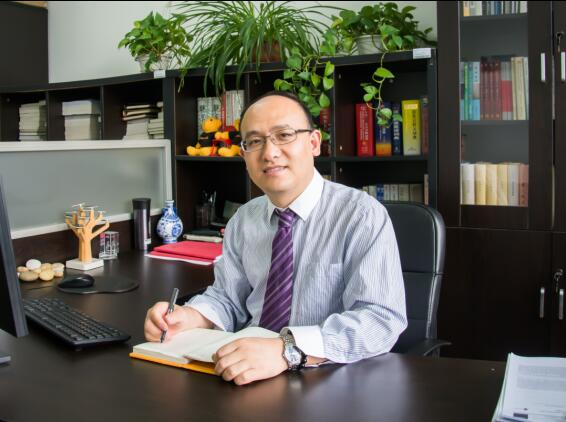黨海政,男,2004年2月畢業於中科院力學研究所(與中科院理化技術研究所聯合培養),獲工學博士學位,攻讀博士學位期間,師從周遠院士,從事高頻脈衝管制冷技術的機理分析、前沿探索及實用化研究工作;2006年3月自中科院工程熱物理研究所博士後出站;自2006年4月起先後在瑞士日內瓦歐洲核子研究中心(CERN)和德國亥姆霍茲聯合會Karlsruhe研究中心(KIT)分別從事大型超導製冷、探測器製冷和高可靠深低溫系統等方面的研究工作;2009年3月歸國,在中科院上海技術物理研究所從事空間製冷及製冷新技術前沿研究至今。現任紅外物理國家重點實驗室研究員、博士生導師,製冷與低溫系統研究組負責人,超導套用集成技術聯合研究中心副主任。自2018年,兼任上海鉑鉞製冷科技有限公司副董事長、總經理、法人代表。
基本介紹
- 中文名:黨海政
- 國籍:中國
- 學位/學歷:工學博士
- 職務:副主任;副董事長、總經理
人物介紹,學術論文,
人物介紹
黨海政研究員近年來的主要貢獻在於開創了本研究所的脈衝管制冷技術研究,建立了其基本理論體系,研製出了系列化樣機並進行了系統的智慧財產權保護,為本研究所航天及工程實用的各類脈衝管制冷機奠定了最直接的基礎。
長期從事低溫製冷科學與技術的研究,在低溫系統及裝置、精密低溫測量與控制、長壽命直線壓縮機技術、回熱式低溫制冷機,特別是以牛津型直線壓縮機驅動的長壽命、高可靠、高製冷效率的高頻脈衝管制冷技術的機理研究及實用化探索等方面做出過較突出的創新性貢獻。在面向空間遙感儀器套用的高頻脈衝管制冷機研究方面,所主持研發出的系列單級和雙級機型可有效覆蓋10 K~200 K的重要溫區,且在部分典型溫區的製冷性能達到國際先進水平,為相關紅外光電系統的重要套用提供了堅實可靠的低溫環境支撐,以之為主要基礎的重要機型已陸續進入航天實用化階段;系列新型深低溫多級機型已擴展至三級到四級結構,有效覆蓋4 K~10 K溫區,為極低溫區的特殊套用奠定了堅實基礎。上述研究還以擁有獨立智慧財產權的長壽命直線壓縮機為基礎,這是有別於國內外一般低溫制冷機研究機構的主要特色之一,牛津型直線壓縮機可實現柔性化的設計和系列化的製造,並受系統的智慧財產權保護。
在致力於空間製冷及製冷新技術前沿及套用研究的同時,還對高頻脈衝管制冷技術在實用超導、先進電力以及高端通訊等重要民用領域的套用進行了成功拓展,如液氮溫區(77 K)的長壽命實用機型已可實現300 W~600 W以上的超大製冷量,牛津型動圈式直線壓縮機的輸出能力超過15 kW,成功打破已開發國家在相關領域的關鍵技術壟斷,多項重要科研成果及專利技術已成功轉向市場。自2018年,兼任上海鉑鉞製冷科技有限公司副董事長、總經理、法人代表。
近年來以第一或通訊作者在本領域重要學術期刊及國際會議上發表學術論文90餘篇(其中SCI、EI或ISTP檢索50餘篇),以第一發明人申請和獲得授權的國內外專利100餘項(其中國家發明專利60餘項,國家發明專利已獲授權40餘項)。擔任製冷及低溫工程領域重要國際期刊《Cryogenics》、《International Journal of Refrigeration》、《Applied Thermal Engineering》、《Energy》等的審稿人。擔任中國電工技術學會超導套用技術專業委員會委員。曾在本領域多個重要國際會議上做特邀報告,並連續兩屆擔任國際製冷大會低溫系統分會場主席(ICR 2011,第23屆捷克布拉格;ICR 2015,第24屆日本橫濱)。
研究生指導中注重培養學生在本領域國際前沿的探索精神和求索能力,並特別注重培養學生理論聯繫實際的能力,強調在具體的科研實踐中鍛鍊學生的工作主動性、獨立性,尤其是實際動手能力。以第一導師指導的研究生中有多人次獲得如國際製冷大會優秀獎、研究生國家獎學金、上海市優秀畢業生、中科院大學優秀畢業生以及中科院朱李月華優秀博士生等榮譽稱號。已參加工作的畢業生多已成長為其所在單位優秀青年骨幹人才。
學術論文
近年來代表性學術論文(僅列第一或通訊作者):
1.Theoretical and experimental investigations on the three-stage Stirling-type pulse tube cryocooler using cryogenic phase-shifting approach and mixed regenerator matrices. Cryogenics, Vol.93, pp.7–16, 2018.
2. Theoretical modeling and experimental verifications of the single-compressor-driven three-stage Stirling-type pulse tube cryocooler. Frontiers in Energy, doi: 10.1007/s11708-018-0569-8, 2018.
3.CFD modeling and experimental verification of oscillating flow and heat transfer processes in the micro coaxial Stirling-type pulse tube cryocooler operating at 90–170 Hz. Cryogenics, Vol.90, pp.30–40, 2018.
4.Theoretical and experimental investigations on the cooling capacity distributions at the stages in the thermally-coupled two-stage Stirling-type pulse tube cryocooler without external precooling. Cryogenics,Vol.82, pp.48–61, 2017.
5.Advances in single- and multi-stage Stirling-type pulse tube cryocoolers for space applications in NLIP/SITP/CAS, IOP Conf. Ser.: Mater. Sci. Eng. 278 012008, doi: 10.1088/1757-899X/278/1/012008, 2017.
6.Investigation on a three-stage Stirling-type pulse tube cryocooler for cooling the low-Tc SQUID. IEEE Transactions on Applied Superconductivity, Vol.27, doi: 10.1109/TASC.2016.2642584, 2017.
7.Effects of the driving voltage waveform on the performance of the Stirling-type pulse tube cryocooler driven by the moving-coil linear compressor. International Journal of Refrigeration, Vol.75, pp.239–249, 2017.
8.A two-dimensional model of regenerator with mixed matrices and experimental verifications for improving the single-stage Stirling-type pulse tube cryocooler.Applied Thermal Engineering, Vol.123, pp.1278–1290, 2017.
9.CFD modeling and experimental verification of a single-stage inertance tube coaxial Stirling-type pulse tube cryocooler operating at 30–35 K using the mixed stainless steel mesh regenerator matrix. Cryogenics,Vol.78, pp.40–50, 2016.
10. Dynamic and thermodynamic characteristics of the moving-coil linear compressor for the pulse tube cryocooler. Part A: Theoretical analyses and modeling. International Journal of Refrigeration, Vol.69, pp.480–496, 2016.
11. Dynamic and thermodynamic characteristics of the moving-coil linear compressor for the pulse tube cryocooler: Part B – Experimental verifications. International Journal of Refrigeration, Vol.69, pp.497–504, 2016.
12. Theoretical and experimental investigations on the optimal match between compressor and cold finger of the Stirling-type pulse tube cryocooler. Cryogenics, Vol.76, pp.33–46, 2016.
13. Entropy analyses of the three-stage thermally-coupled Stirling-type pulse tube cryocooler. Applied Thermal Engineering, Vol.100, pp.944–960, 2016.
14. CFD simulation of a miniature coaxial Stirling-type pulse tube cryocooler operating at 128 Hz. Cryogenics, Vol.73, pp.53–59, 2016.
15. An electrical circuit analogy model for analyses and optimizations of the Stirling-type pulse tube cryocooler. Cryogenics, Vol.71, pp.18–29, 2015.
16. Theoretical and experimental investigations on the partial scaling method for the Oxford-type moving-coil linear compressor. Cryogenics, Vol.69, pp.26–35, 2015.
17. Development of high performance moving-coil linear compressors for space Stirling-type pulse tube cryocoolers. Cryogenics,Vol.68, pp.1–18, 2015.
18. High efficiency pulse tube cryocoolers for aerospace applications. Advances in Cryogenic Engineering, Vol.59, pp.378–385, 2014.
19.Development of high efficiency pulse tube cryocoolers for space-borne infrared applications. SPIE 8562, doi:10.1117/12.999356, 2012.
20.10W/90K single-stage pulse tube cryocoolers. Cryogenics, Vol.52, pp.221–225, 2012.
21.High-capacity 60 K single-stage coaxial pulse tube cryocoolers. Cryogenics, Vol.52, pp.205–211, 2012.
22. 40 K single-stage coaxial pulse tube cryocoolers. Cryogenics, Vol.52, pp.216–220, 2012.

